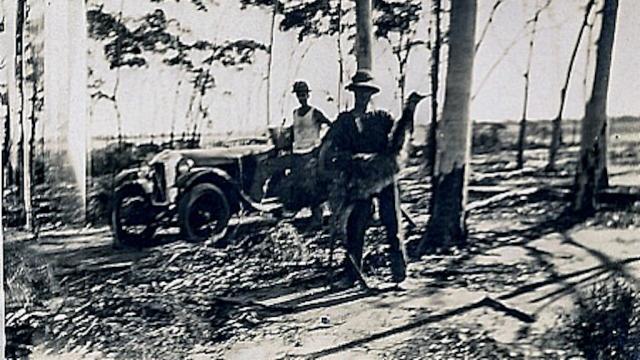In recent years, Australia has been embroiled in an effort to cull kangaroos — this year alone, it’s expected to kill over a million of them in an effort to protect endangered species in its grasslands. While the mass culling has sparked outrage among animals rights activists, waging war on its fauna is nothing new for Australia. In fact, Australia has been trying to subdue its animals for decades, and the most infamous historical attempt was an utter disaster.
Image: Wikimedia Commons
In 1932, Australia declared war on its emu population — for real. After the first World War, the government had purchased 90,000 hectares of land for their veterans in Western Australia, around Perth. This was, for many reasons, a terrible idea, considering the land was very poor for farming and also riddled with emus. The 1.9m-tall birds, indigenous only to Australia, had once been a protected species, but when they began stomping over the veteran’s wheat fields, they were reclassified as vermin, according to Scientific American.
The Australian government felt it had no other choice but to turn its military on some 20,000 of these flightless birds. Despite being equipped with light machine guns called “Lewis Guns” and years of training, the soldiers were utterly dunked on by the fast moving, chaotic birds. It was very embarrassing for the military, and most of all, a nuisance to the emu population.
Perhaps the military’s biggest mistake was assuming the flightless birds would surrender without a fight. According to wildlife biologist Imogene Cancellare, birds — including emus — might not be as “bird-brained” as the insult suggests.
“The neocortex, a structure on the surface of the brain, is where most higher-order processing occurs in the brains of mammals,” Cancellare told Gizmodo. According to Cancellare, researchers have found a structure similar in function to the mammalian neocortex in an entirely different part of the bird brain, “which supports the hypothesis that birds are actually quite intelligent.”
Maybe the unexpected intelligence of their enemies is why a group of highly-trained soldiers had their asses handed to them by winged goofballs. On the fourth day of the war, one Australian soldier lamented:
The emus have proved that they are not so stupid as they are usually considered to be. Each mob has its leader, always an enormous black-plumed bird standing fully six-feet high, who keeps watch while his fellows busy themselves with the wheat. At the first suspicious sign, he gives the signal, and dozens of heads stretch up out of the crop. A few birds will take fright, starting a headlong stampede for the scrub, the leader always remaining until his followers have reached safety.
After several rounds of brutally embarrassing combat, in November 1932, the military packed it in. Though the emus were ultimately victorious, more than a thousand birds were killed over a period of weeks, according to a report by Modern Farmer. Their sacrifice will never be forgotten.
Today, the emu population is pretty stable. The Australian government would be wise to heed history’s warning and not piss off other populations of animals. The outcome could be embarrassing.
“I have heard it said that Australia could spend every dollar it has and never be completely rid of feral pigs, which are smart, eat lots of things, and reproduce rapidly,” Bill Laurance, Director of the Centre for Tropical Environmental and Sustainability Science at James Cook University, told Gizmodo.
Over just the last century, Australia has tried to cull crocodiles, emus, kangaroos, dingoes and great white sharks “with varying success,” Laurance explained. Lawmakers say the culling efforts are meant to protect humans and endangered species. But it seems that no matter what, some animals will always outsmart the hunters sent to kill them.
“Crocodile killing was halted some years ago and many were amazed at how quickly big crocodiles were seen afterward; clearly the brig crocs had learned to hid from hunters,” Laurance said. “They weren’t being completely wiped out by hunters, just made more wary and secretive.”
The Australian government has spent years in its most recent tango with kangaroos. This year, it plans to kill over 2600 kangaroos and expand its culling territory into New South Whales. Naturally, the controversial efforts have been protested by activists and conservation groups — last year, a 71-year-old Canberra resident was found guilty of “disrupting the cull”. Try as the Australian government might, the ‘roos always seem to bounce back, literally. Also figuratively.
Only time will tell who wins the Great Kangaroo War. We know which side the emus will be fighting on.
